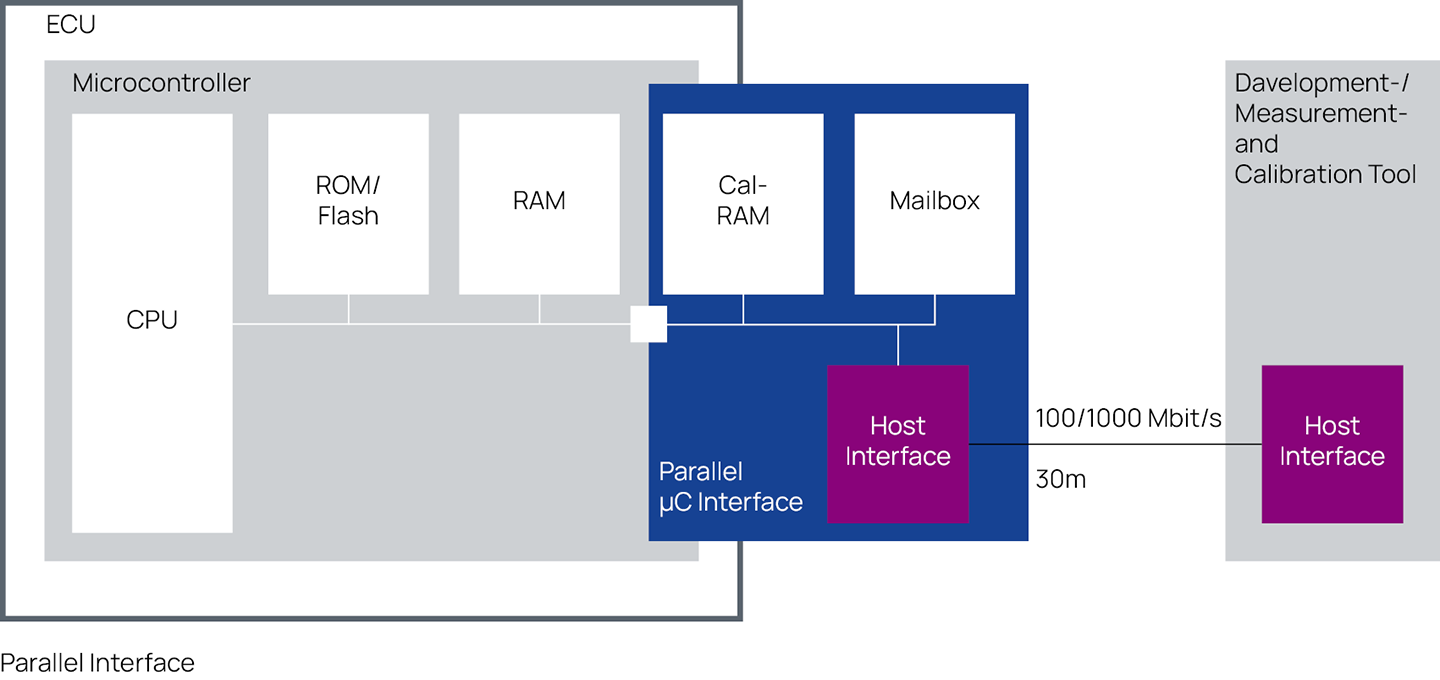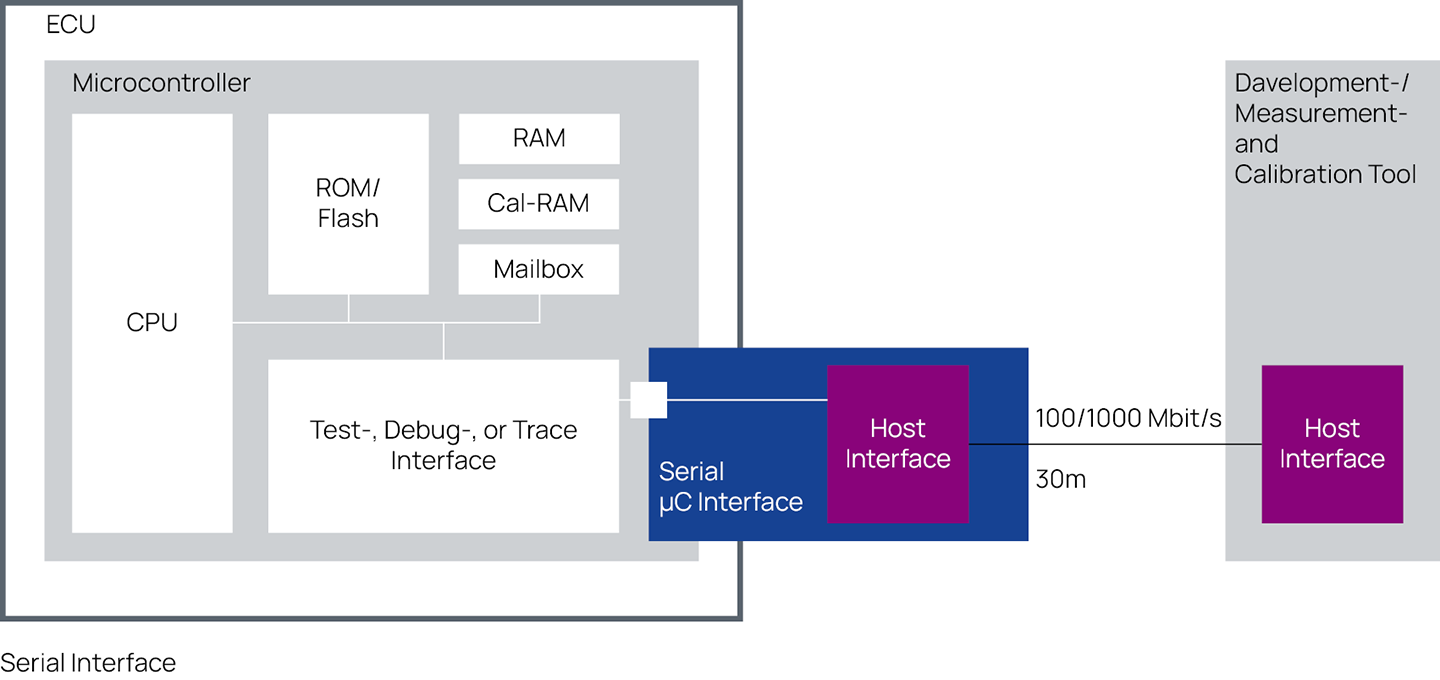Due to their construction, ETK, FETK, and XETK development ECUs do not require an additional serial interface to connect to the development tool. As a functionally and physically separate addition to the ECU, ETKs, FETKs, and XETKs facilitate direct comparison between the behavior of the development ECU and its production counterpart. Using an ETK, FETK, or XETK development ECU, series-production software can be calibrated with great ease and subsequently verified with the production ECU without the need to change drivers in the platform software.
Parallel and Serial ECU Interface

The areas in the ECU's nonvolatile memory (Flash/ROM) containing the parameterization data and/or ECU program are mirrored in the RAM onboard the ETK, FETK or XETK (CalRAM). This is accomplished by accessing the CalRAM via the microcontroller´s data/address bus. For measurements and real-time applications, the data exchange between ETK, FETK, XETK and microcontroller uses a mailbox as intermediate memory. This is accomplished by synchronizing the data by means of trigger signals from the ECU program. The connection between development and calibration tools consists of a 100 Mbit/s (ETK/XETK) / 1000 Mbit/s (FETK) Ethernet cable up to 30 meters long.

When the microcontroller does not provide an external data and address bus, a microcontroller variant containing extended memory is often used for ECU development. In both test bench and in-vehicle testing, the ETK, FETK, or XETK interface facilitates access to the microcontroller over a long distance through a powerful test, debug, or Trace interface, such as JTAG, NEXUS, or AURORA. The application, views both the serial and the parallel ECU interface as identical and ECU independent.